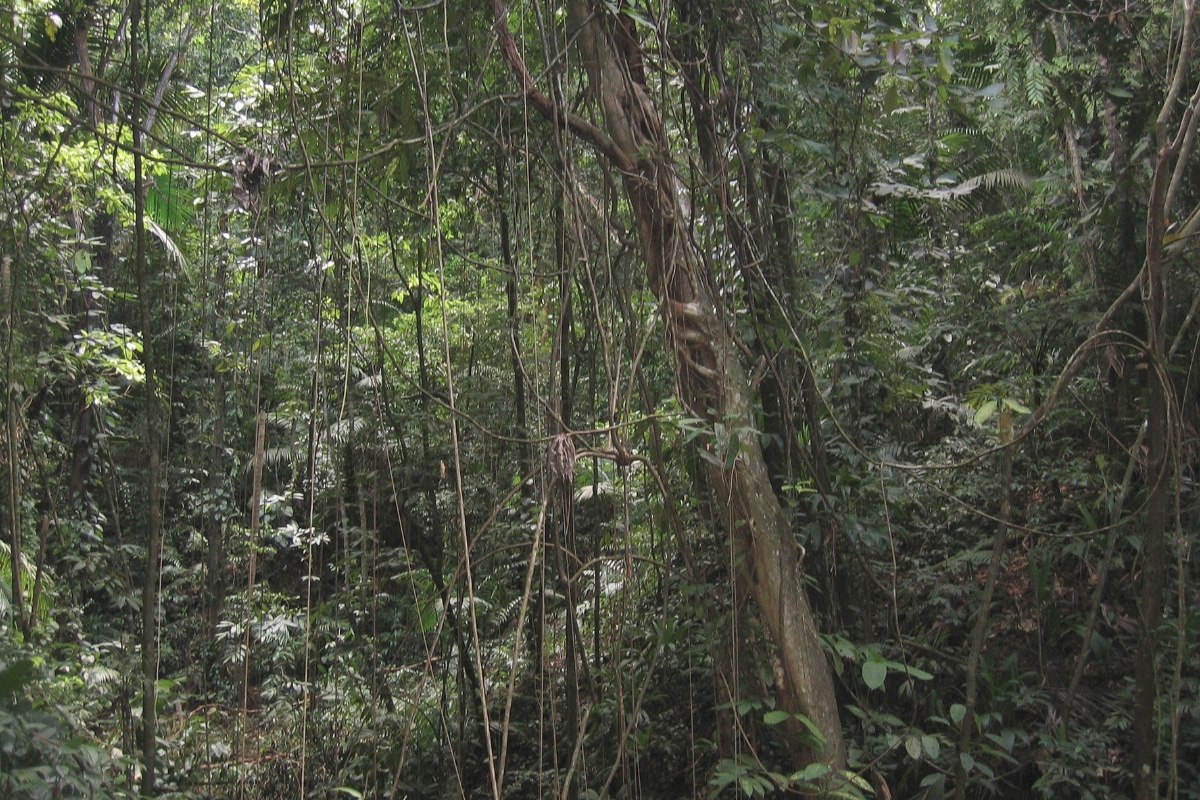
The creepers made famous by Tarzan are rapidly gaining ground in neotropical areas. It’s not good news, but researchers now think they know why.
Lianas are very important for tropical forests. For example, they serve as natural bridges that allow animals to move quite easily from tree to tree. So they are very useful. Unless there are too many of them. And that’s exactly what researchers have seen happening in neotropical forests (tropical forests in Central and South America) for about twenty years. And until now they couldn’t explain it. But a new study – published in the magazine Ecology Letters – changes that. “By following the fate of 117,000 lianas over 10 years, we were able to show that the increase in lianas is closely related to the disturbance of the forests,” said researcher Stefan Schnitzer, who was associated with the study at the time. Smithsonian Tropical Research Center and now working at the Wageningen university.
Natural disturbance
Schnitzer and colleagues examined the thousands of lianas in a fifty-hectare area in Panama that has not been touched by humans for centuries and where the lianas are rapidly gaining ground. In ten years, the vine density has increased by no less than a third! And this increase turned out to be in most cases attributable to the death of trees. “This causes a disturbance in the otherwise dense tree layer (the vegetation layer at high altitudes that mainly consists of tree crowns, ed.) and in the vegetation layer below.” The occurrence of such disturbances is not uncommon in tropical forests. “Each year, about 1 to 2 percent of the trees that make up the tree layer die.”
light
And the dying of those trees plays into the hands of lianas. Where the leaf of that tree used to block out a lot of sunlight, suddenly a place that receives much more sunlight is created due to the falling of the tree. “And as a result, the lianas grow better. They also produce a lot of new branches under those circumstances, which in turn create their own root system and eventually continue to grow independently of the mother branch. In this way, lianas can quickly fill the ‘gap’ – which is created by the loss of the tree in the tree layer and underlying vegetation.”
Other factors
It has been suspected for some time that the death of trees underlies the rapid advance of lianas. But now researchers can prove that too. “This disturbance can largely explain the increase in liana density.” But not completely; there’s more going on. “The response of lianas to this disturbance (i.e. the death of trees, ed.) seems to be more intense or partly made possible by other factors, such as an increase in carbon dioxide, temperature or other factors related to climate change,” Schnitzer tells. Scientias.nl. “Which factors – in combination with the natural disturbance – are most important is still unclear.”
Problem
What is clear is that the increase in lianas is a problem. “Lianas are a natural part of the forest,” says Schnitzer. “But empirical evidence shows that lianas, when grown too much, can have a devastating effect on trees.” In this way they limit the growth, reproduction and survival of the trees. “And in doing so, they also limit the extent to which tropical forests can store CO2. After all, tropical forests are an important part of the global carbon cycle, because they remove CO2 from the air and store it for a long time, mainly in the trunks of large trees. Because lianas compete with trees, the extent to which trees can absorb carbon decreases. Meanwhile, the lianas themselves cannot store nearly as much carbon as trees do, so at the bottom the amount of carbon stored in tropical forests is decreasing.”
Future
Schnitzer and colleagues aren’t quite sure what the future of neotropical forests and the lianas that can be found in them looks like. “If vine density continues to increase, the forest dominated by tall trees may slowly give way to less tall, liana-dominated vegetation. An alternative scenario is that the increase in lianas levels off and the lianas reach an equilibrium in which the growth of lianas is back in balance with the death of lianas.” Which scenario best describes the future partly depends on the driving forces behind the increase in lianas. “The natural disturbance is an important part,” emphasizes Schnitzer. But as long as it is not clear which changes caused by climate change also contribute, it is also difficult to determine how the lianas will fare in the future. “We can only find out through experiments and continuous monitoring of forests.”
In anticipation of those results, we all have work to do, says Schnitzer. “It is critical that we reverse climate change as soon as possible. And by reducing greenhouse gas emissions, halting deforestation and giving forests the chance to recover.” And the latter is not something that we can blindly assume will still be possible in 10 or 20 years’ time. “Tropical forests are resilient ecosystems and they may be able to recover, but that will be a lot more difficult if they transform into a liana-dominated forest.”
Source material:
“Dramatic liana increases in old-growth tropical forests associated to natural disturbance and climate change– Smithsonian Tropical Research Institute
Interview with Stefan Schnitzer
Image at the top of this article: MW from Pixabay